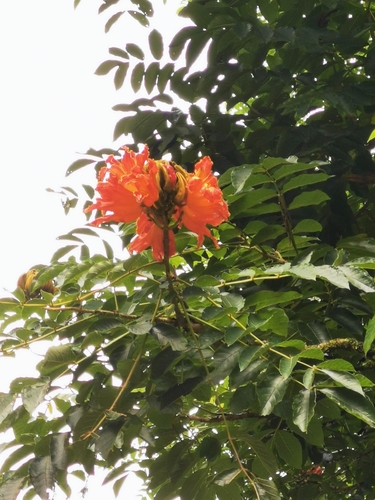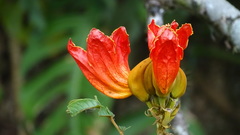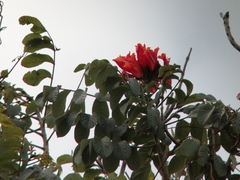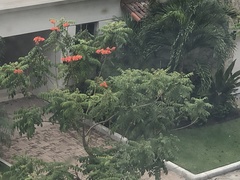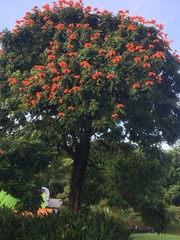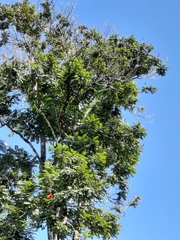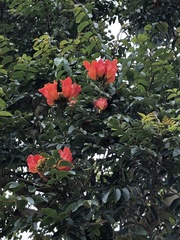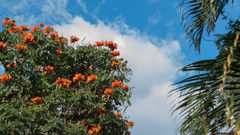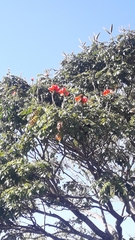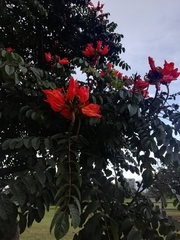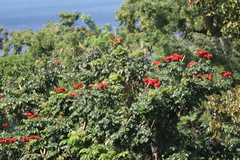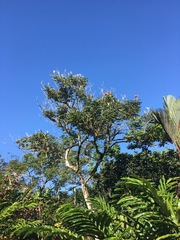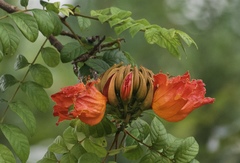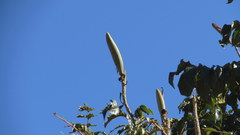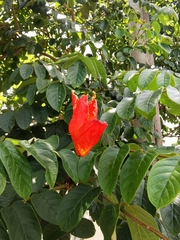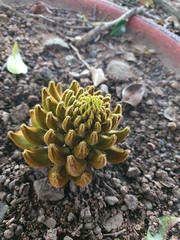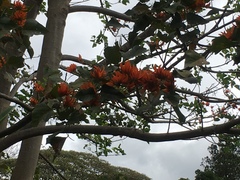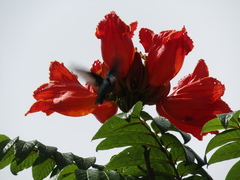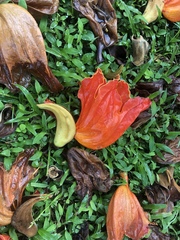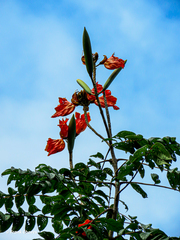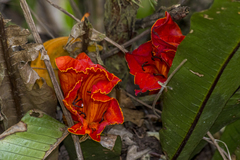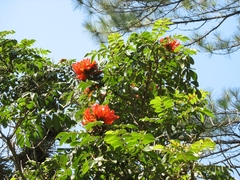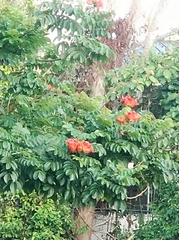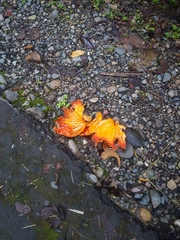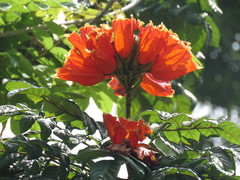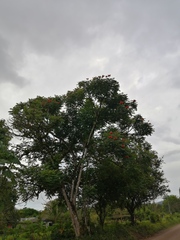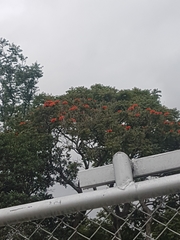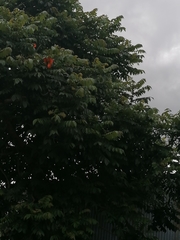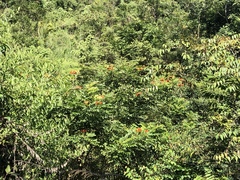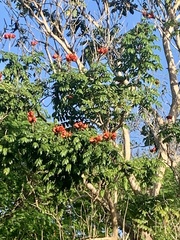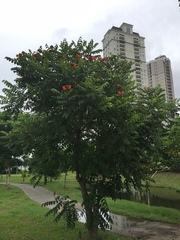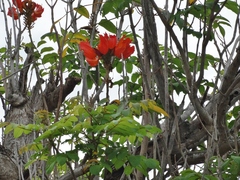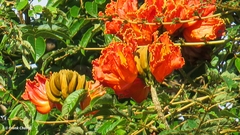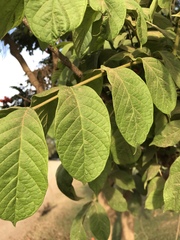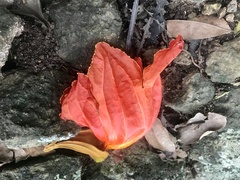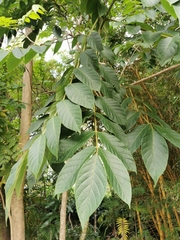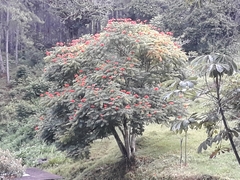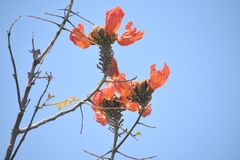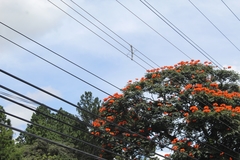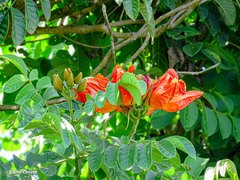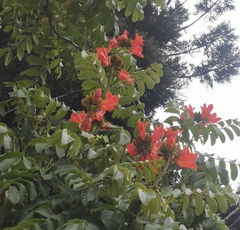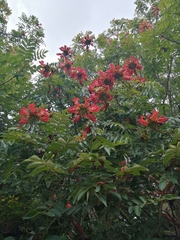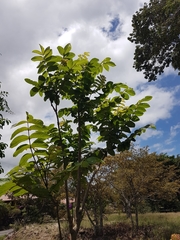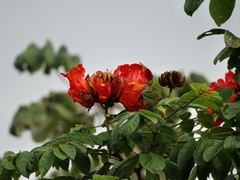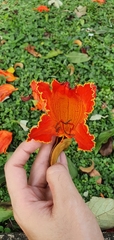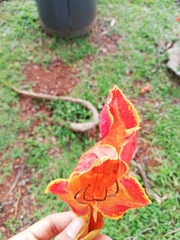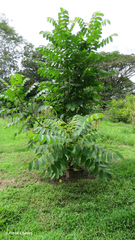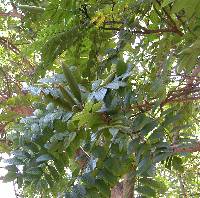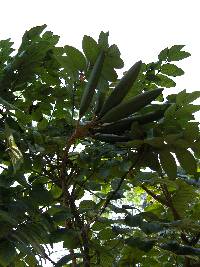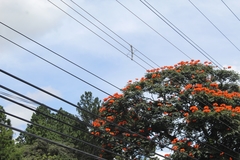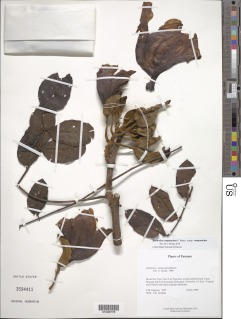

|
|
|
|
Family: Bignoniaceae
African-Tuliptree, more...African tulip tree (es: llama del bosque, Tulipán africano, Tulipan de la India)
|
Description: An alien tree, native to Africa, planted here as an ornamental. Has a straight trunk and opposite compound leaves. The leaves usually have 13-15 leaflets, and always a terminal leaflet. At the base of each leaf, there is a round, miniature leaf, which is actually the stipule. Reproduction: This species is widely planted throughout the tropics for its bright orange clusters of large flowers. Fruits are long pods that often stick upward out of the crown. Distribution: Commonly planted along streets in Panama City and all the Canal area towns. Similar Species: The leaves are quite similar to those of LK sponmo Spondias mombin, LK2 the jobo, which also grows commonly along streest of the Canal area. But Spondias and other trees of the area with similar compound leaves all have alternate leaves. Other species with opposite, compound leaves are different enough so as not to be confused with Spathodea. Descripción: Árbol de 5 a 25 m de alto. Tronco ramificado a baja altura. Corteza exterior gris. Ramitas terminales verdes y con lenticelas blancas. Hojas imparipinnadas y opuestas, con 9-15 folíolos, opuestos en el raquis. Folíolos de 5-15 x 4-8 cm, elípticos a obovados, con ápice acuminado, bordes enteros y base ligeramente cordada o redondeada. Pecíolo de 3-5 cm de largo y pulvinado en la base. Flores anaranjadas y con los bordes amarillos. Frutos en cápsulas, de 12-25 cm de largo, dehiscentes al madurar. Semillas aladas. Datos Ecológicos: La especie crece a bajas elevaciones, en lugares secos o húmedos. Nativo de África y cultivado como planta ornamental en muchos lugares del trópico. En Panamá se encuentra ampliamente distribuido. Florece y fructifica de febrero a junio. Las semillas son dispersadas por el viento. Especies Parecidas: A menudo se confunde con LK kigeaf Kigelia africana LK2 , pero en K. africana las flores cuelgan de las ramas inferiores y los frutos son indehiscentes y similares a salchichones. Usos: Utilizado como planta ornamental en muchos lugares de Panamá. Cultivated tree, 7 (25) m tall, pubescent throughout, especially rufous-tomentose on lower leaf surface, inflorescence branches, and calyces; pseudostipules foliaceous, ovate-cordate, 3 cm long, 2 cm wide. Leaves pinnate, 3-19-foliolate, to 50 cm long; petioles 3-7 cm long; petiolules obsolete or to 2 mm long; leaflets +/- elliptic, abruptly acuminate, acute to rounded at base, 7-13 cm long, 4-7 cm wide. Racemes terminal, corymbiform; flowers large, showy; calyx spathaceous, to ca 6 cm long, the lobes curved inward; corolla broadly campanulate, asymmetrical, more deeply cleft on one side, to ca 13 cm long, red-orange, the lobes ovate, the margin yellow and undulate; stamens directed inward toward calyx, often exserted between lowermost lobes like the style; anther thecae divaricate, 8 mm long; ovary narrowly oblong, minutely papillate. Capsules +/- oblong, flattened, smooth, acuminate at apex, obtuse at base, 6-11(21) cm long, 4-5 (6) cm wide, splitting open on one side; replum perforated, loose at base; seeds ca 2 cm long and 3 cm wide, the wings transparent, the margin smooth. Croat 517. The species is easily recognized by its large, red-orange flowers and oblong capsules with winged seeds. |

